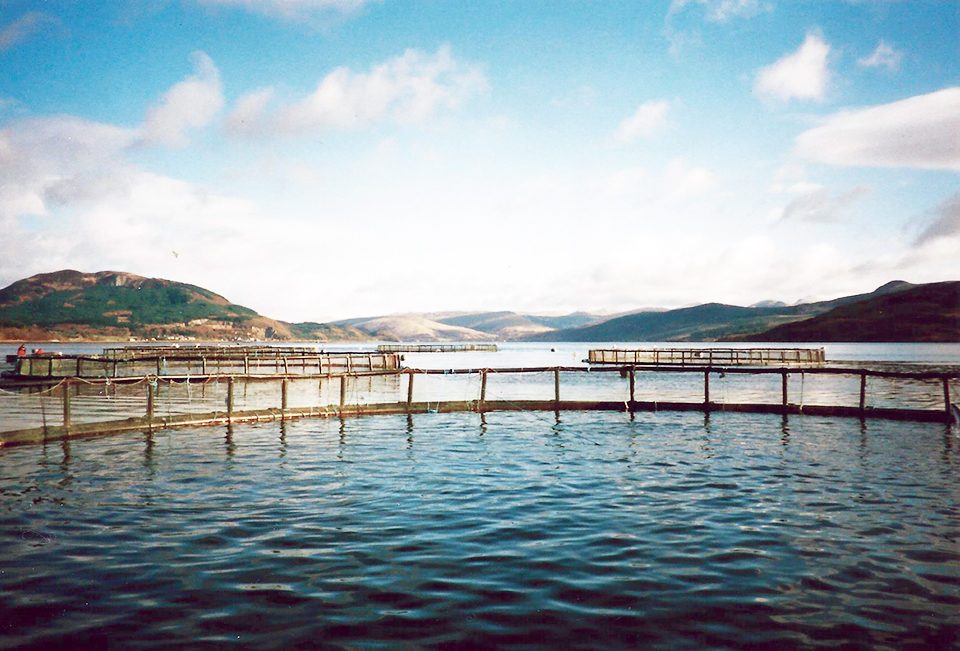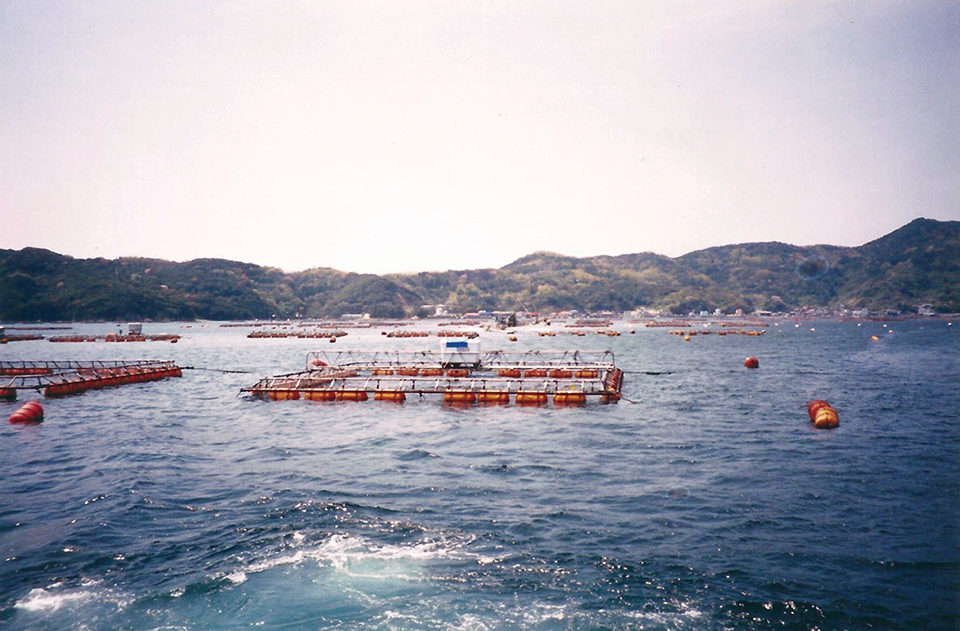Data crucial for ecosystem impacts, fisheries production, human nutrition

Escapes of farmed fish from both freshwater and seawater aquaculture facilities into nature are an industry issue. Especially in sea cages, juvenile and adult fish escapes from growout infrastructures generally originate from breaches caused by predators or heavy storms, or from mistakes committed by fish farmers during fish manipulations. At the hatchery level, escapees include fertilized eggs, fingerlings and juveniles that accidentally find themselves in surrounding rivers as a result of leaks in the rearing structures and equipment or handling errors.
Driven by ecologists and conservationists, the fate of farmed fish escapees has spurred scientific interest globally, especially in Atlantic salmon-producing regions. Farmed salmon escapes occur in Norway, the United Kingdom, Canada, the United States, Greenland, Chile, Iceland, Turkey and Australia. These escapees can lead to significant ecological issues, including interbreeding and competition with wild fish for breeding partners and breeding grounds. They may also transmit diseases and parasites to both related and unrelated wild fish species, as well as compete for feed and space.

Physical barriers
Globally, concerns about farm fish escapes have been essentially focused on the coastal and offshore farming of Atlantic salmon. In fish hatcheries and land-based growout facilities, fish escapes are fairly well controlled by the use of physical and physico-chemical barriers.
Physical barriers restrict fish from leaving the rearing facility by, for example, employing screens with a mesh size smaller than the size of the cultured fish or eggs in the outlets of fish incubators, ponds or tanks. Also, locating a fish farm where natural conditions can not allow the growth of escapees – such as in semi-arid and arid regions, indoor production of tropical fish species in temperate regions or fish farming on roofs in urban zones – is an effective approach.
Physico-chemical barriers are designed to reduce the chances of fish survival in nature following an escape through the modification of specific parameters in the water environment adjacent to the rearing facility. These include controlling water temperature, pH and salinity, or the addition of substances that are toxic to fish, such as dissolved chlorine or rotenone in the adjacent water. However, a 100 percent successful physical or physico-chemical measure for fish containment has yet to be achieved.
Sea farm measures
Sea cage farming systems are widely used in many countries, especially in the intensive production of high-value marine fish such as Atlantic salmon, amberjack, Atlantic cod, gilthead sea bream, turbot and European seabass. Some freshwater fish, such as tilapia and rainbow trout, are also raised in cages in lakes and rivers.
Cage farming offers intensive production with less investment in systems to maintain high water quality, as is the case with tank-based aquaculture, for instance. During the last two decades, engineering solutions have been sought to improve sea cage designs to prevent fish escapes. The new developments include, for example, new materials to make stronger net cages, double-net cage systems and the use of non-lethal antipredator devices.
An experimental two-week acoustic conditioning of farmed Atlantic salmon at 250 Hz frequency developed in the United States has been demonstrated effective in recalling and capturing over 85 percent of farmed salmon escapees over a seven-month culture. However, its practical application remains to be implemented.
Bioconfinement
Biological approaches or “bioconfinement” based on recent developments in biotechnology have also been investigated. These approaches include the production of fish lines unable to reproduce in nature through the use of triploidy. Triploid fish do not undergo changes due to sexual maturity and thus are expected to grow bigger with good flesh quality. Despite such advantages, the application of this technology remains to be widely implemented.
Triploid fish experience some production, health and welfare problems, as they are more prone to stress and diseases. The production of triploid fish also poses some environmental and aquacultural concerns, as it requires fertile broodfish, and although triploid fish could not reproduce in nature following an escape, they could disturb wild populations through competition for feed and space.
Another bioconfinement approach consists of inducing the death of escaped farmed organisms through a severe nutrient deficiency. Biotechnology techniques can be used to produce a line of fish that express a gene inducing a high requirement for a specific nutrient. This requirement can be satisfied under rearing conditions through adequate feeding. The fish will develop normally but will not survive in nature, where the nutrient availability is limited.
Currently, the few bioconfinement approaches using this technology – under investigation in Canada – are based on the interactions between nutrients such as proteins and lipids, proteins and carbohydrates, and proteins and vitamins. This work is still in its early stages of research and development, and in order for any biological confinement approach to be fully successful, it must be combined with other approaches.
Documentation needed
Whatever measures are taken to prevent fish escapes, as long as fish are reared in cages, some escapes will occur and cause ecological issues. More efforts are required to prevent farm fish escapements.
An initial step in this direction is to systematically document farm fish escapes from rearing infrastructures. This data is crucial, and together with data on wild fish populations, is needed to attempt predictions of short-, medium- and long-term effects on the aquatic ecosystem, fisheries production and human nutrition. Reporting of farmed fish escapes must become a common practice in the aquafarming industry.
Fish farmers must be educated and even incentivized regarding the need to immediately report every observed fish escape event, both at the hatchery and in growout phases. Farmers should also provide information on the potential causes of each escape event.
Furthermore, every fish farmer should keep records on final fish survival, the possible causes of fish mortalities and the condition or stage of deterioration of rearing infrastructure at the end allow of every production cycle. This information can be used to establish policies and plans to prevent and minimize fish escapes, and for better cohabitation of farmed fish and wild populations in the same watershed or water body.
(Editor’s Note: This article was originally published in the March/April 2015 print edition of the Global Aquaculture Advocate.)
Authors
-
Rodrigue Yossa, Ph.D.
Department of Biology
Gus R. Douglass Institute
West Virginia State University
P. O. Box 1000
Institute, West Virginia 25112 USA[114,102,46,111,111,104,97,121,64,97,115,115,111,121,100,111,114]
-
Grant W. Vandenberg, Ph.D.
Département des Sciences Animales
Université Laval
Québec, Q.C., Canada
Related Posts

Innovation & Investment
AquaBounty, with new RAS facility, hopes to win public support for GM salmon
Ron Stotish, CEO of AquaBounty Technologies, believes genetically modified salmon is no threat to its opponents and the outlook for AquAdvantage is good. With its purchase of the Bell Fish Co. RAS facility, commercialization will soon commence.

Health & Welfare
Chem-free fixes emerging in sea lice saga
Salmon farmers, using emerging technologies, are exploring new methods of sea lice mitigation in an effort to overcome one of the industry’s most persistent problems. New chemical-free innovations show an industry eager to adapt and adopt environmentally safe practices.

Aquafeeds
Aquaculture Exchange: Andrew Jackson, IFFO
Aquaculture remains dependent on fishmeal and fish oil, crucial marine ingredients in aquafeeds, particularly at key life stages. Andrew Jackson, technical director at IFFO and one of the world’s foremost fishmeal experts, tells the Advocate that the two industries can coexist well into the future if properly managed.

Innovation & Investment
Aquaculture Exchange: David Little, University of Stirling
David Little, professor at the University of Stirling in Scotland, tells the Advocate about the rapid evolution of the aquaculture industry in Southeast Asia — where he made his home for many years — and discusses the role of academia in ushering in new eras of innovation.


